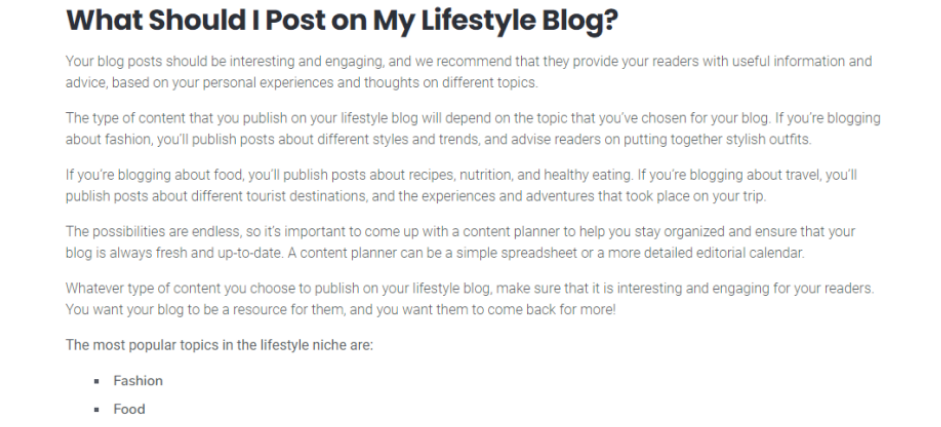Discover What’s The Ideal Paragraph Length Considered
The debate around the number of sentences required in a paragraph has often created a lot of confusion among writers. That’s because we keep noticing a change in the typical length of a paragraph when reading different types of documents. When an educator says that 3 to 5 sentences are the ideal length for a paragraph, it creates a lot of confusion among learners when they later encounter blog posts with a radically different approach.
Clearly, the problem seems to lie in the constant need to create a standard for the number of sentences required in a paragraph. However, this doesn’t mean that the length of each paragraph should be free floating throughout a document. In case you’ve already written something, find it to be clutterd, and are clueless about where to start, our article writing services team can help massively improve your document.
Ideal Paragraph Length in Academic Writing

By now, if you’re feeling betrayed by your school teacher, we’d like to let you know that they weren’t wrong in teaching you that your essays should be 3 to 5 sentences long. The purpose for teaching this was not to teach it as a hard and fast rule, rather it was to help you understand how you could use paragraphs to properly present your ideas in a well-structured manner, so that it does not look cluttered or sound incoherent.
Because academic writing is usually argumentative, it has a common requirement for beginning an argument by making a statement, supporting it with evidence, and then drawing a conclusion. Of course, fulfilling these requirements is not possible in just 1 or 2 sentences, which is why it typically takes 3 to 5 sentences to complete a paragraph.
Ideal Paragraph Length in Non-Academic Writing

In non-academic texts, the purpose of writing is quite different, often the writing we come across is informative, which is why writing shorter than 3-5 sentence paragraphs works perfectly alright. It’s also worth noting that a lot in determining the paragraph length, has to do with the readers as well. When writing for newspapers, journalists usually have to keep the sentences short in order to make the content easily digestible for the reader. That’s the reason why we find newspaper articles to have shorter paragraphs.
In a similar fashion, a lot of other types of writing, such as blog posts or social media copy, preferably use shorter paragraphs to enhance readability and keep the long form content easily skimmable. That’s because the very aim of writing these articles is to inform, and the audience is also different from the more focused academic readers. Internet users usually like the white spaces between the body text, which is not only created with the help of multiple small paragraphs, but also with several subheadings to divide the different sections more neatly.
Key Elements Required in a Paragraph
While paragraphs can be composed of even one word, there are generally a number of key elements that every effective paragraph should typically have: unity, coherence, a topic sentence, and sufficient development.
Unity
One of the key elements of an effective paragraph is unity. Because a paragraph should be focused on a single idea or argument, it is necessary for each sentence to carry that argument forward without straying from the topic. In case a sentence does stray from the topic statement, you should replace it, or start a new paragraph altogether.
Coherence
The second important key element of an effective paragraph is coherence. This means that the ideas within a paragraph must flow smoothly from one sentence to another without sounding choppy or abrupt. For this purpose, using transition words is often recommended as they help maintain the flow of thought while going from one point to another.
Topic Sentence
The third key element of every paragraph is a topic sentence. The topic sentence gives the reader an insight into what the paragraph will be discussing. It should be placed at the beginning of the paragraph and must state the main point or argument of the paragraph in a clear and concise manner.
Proper Development
The fourth and final key element of an effective paragraph is proper development of the topic sentence. This means that the ideas presented in the topic sentence must be developed further with evidence, examples, or explanations. The sentences following the topic sentence should provide support for the argument made in that sentence while also expanding upon it and linking it back to the main thesis of the essay.
When all of these key elements are present in a paragraph, the resulting paragraph is usually concise, well-organized, and easy to understand. However, if even one of these elements is missing, the paragraph might sound choppy, incoherent, or incomplete.
Now that we’ve looked at what makes a paragraph effective, let’s take a look at an example to see how these key elements come together.
Boost your online presence with high-quality SEO-Optimized articles!
Boost Visibility
Example of an Effective Paragraph
The following is an example of a paragraph that includes all of the key elements discussed above:
Americans today are more health conscious than ever before. Thanks to advances in medical science, we now know more about how to live a healthy lifestyle and what types of food we should avoid. As a result, many Americans are making changes to their diet in an effort to improve their health.
This paragraph maintains unity in it by staying focused on a single main idea: that Americans are becoming more health conscious. It also has coherence, as the sentences flow smoothly and logically from one to the next.
The topic sentence states the main idea of the paragraph clearly and concisely, while the following sentences provide support and development for that idea. Finally, the paragraph includes a concluding sentence that sums up the main point of the paragraph.
In conclusion, an effective paragraph should contain unity, coherence, a topic sentence, and proper development. By including these key elements, you can ensure that your paragraphs are well-organized and easy to understand.
Finding The Right Balance Between Long and Short Sentences

Generally speaking, the best approach in maintaining an ideal paragraph length is to keep a balance between the number of long and short sentences. While it’s important to have at least one long sentence in each paragraph (in order to provide proper development for your ideas), too many long sentences can make your writing sound dense and difficult to read.
To avoid this problem, try to mix up the length of your sentences. Use shorter sentences for simple ideas, and reserve longer sentences for more complex ideas. Moreover, avoid fluff writing at all costs as it would save you from subconsciously writing lengthier sentences. This will help to keep your content sounding fresh and easy to read.
Benefits of Writing Paragraphs in Varied Lengths
A good writer always makes sure to maintain the right balance between long and short sentences as it allows for the text to have a smooth progression from one paragraph to the other, enabling the writer to emphasize specific details, and vary the tone according to their need.
Have you ever noticed how writers succeed in building a dramatic effect when they need to? If not, you must pay attention to some of these writing conventions used in such cases, the next time you’re reading a fictional book. Long sentences could serve multiple functions: one of these is to build tension.
On the other hand, writing a short sentence could be punchy and more impactful, whereas long sentences could be used to develop this tension to a point of culmination. In order to give much more detailed and vivid descriptions.
FAQs
| Are 5 sentences enough for a paragraph? I would say that five sentences is a good minimum for a paragraph, but there are a few exceptions. If you are writing for an academic audience, then your paragraphs will likely be longer. However, if you are writing for a more general audience, then five sentences should be sufficient. The important thing is to make sure that each paragraph has a clear purpose and that all of the sentences support that purpose. If you can do that, then you can write a paragraph of any length. |
| Can you have 4 sentences in a paragraph? Yes, you can have four sentences in a paragraph. However, it is usually better to have five or more sentences so that the paragraph is more developed and has a clear focus. If you only have four sentences, make sure that they are all relevant to the topic of the paragraph and that they flow together well. Otherwise, it might be better to break the paragraph into two smaller paragraphs. |
| How long is too long for a paragraph? There is no hard and fast rule for how long a paragraph should be. However, it is generally better to keep paragraphs relatively short so that they are easier to read and understand. If a paragraph is getting too long, you might want to consider breaking it up into two or more smaller paragraphs. Ultimately, the best decision will depend on the specific content of the paragraph and your audience. |
| Is it OK to have a 300 word paragraph? There is no hard and fast rule for how long a paragraph should be, but in general, it is best to keep paragraphs relatively short. A 300-word paragraph might be too long for some audiences, so it is important to consider your audience when making this decision. If you are writing for an academic audience, they may be able to handle a longer paragraph, but if you are writing for a general audience, it is best to keep it shorter. Ultimately, the best decision will depend on the specific content of the paragraph and your audience. |

Unleash your brand story`s potential with eContentSol – your creative writing companion. We craft narratives that captivate. Ready to elevate your content game? Dive into creativity with us and let`s bring your ideas to life.


